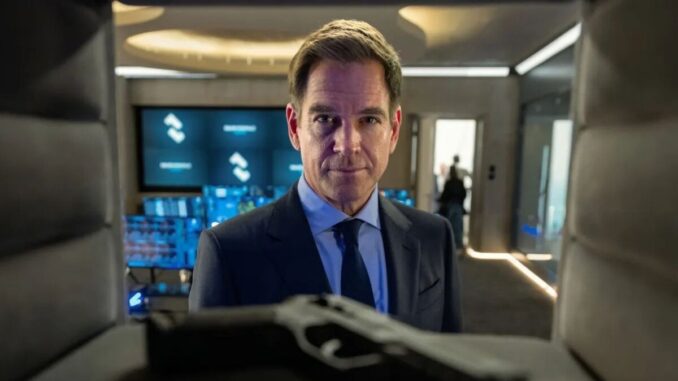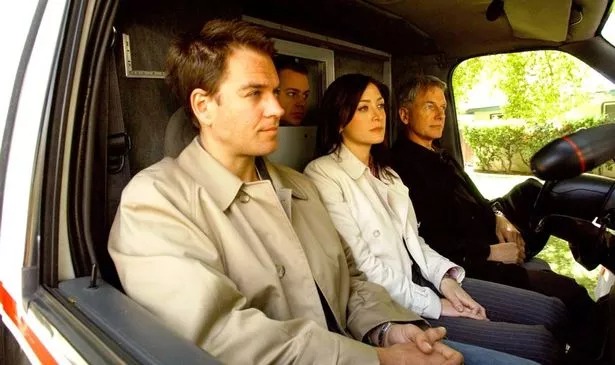
Introduction: When NCIS Was More Cartoon Than Crime Drama
When you think of NCIS, you probably imagine gripping crime stories, complex characters, and high-stakes naval investigations. But according to longtime cast member Michael Weatherly, the early days of the show were a lot less grounded in reality — and more like a Saturday morning cartoon. Yes, you read that right. Weatherly, who played the beloved Special Agent Tony DiNozzo, didn’t hold back when he revealed just how different the tone used to be — and the unrealistic flaw that made it feel more like Scooby-Doo than Law & Order.
Let’s dig into exactly what Weatherly meant, how NCIS evolved over time, and why his cartoon comparison may be more accurate than fans care to admit.
Michael Weatherly’s Wild Comparison: NCIS as a Cartoon?
Why He Thinks the Show Felt Animated in the Beginning
Michael Weatherly’s comments aren’t just clickbait — he genuinely believes that NCIS Season 1 had the vibe of a cartoon. In interviews, he’s joked that the early tone leaned more toward the exaggerated and unrealistic side of storytelling. But what does he mean by that?
According to Weatherly, the series lacked realism, especially in how characters interacted and solved crimes. It felt like a world where bad guys were caught way too easily, and heroes never got seriously hurt — just like in cartoons.
The ‘Unrealistic’ Flaw He Couldn’t Ignore
So, what was the big flaw? Weatherly pointed out that the agents rarely missed a shot, always caught the killer, and wrapped up complex investigations in under an hour. Real life? Not quite.
In his words, it felt more like a fantasy land of crime-solving — with no real-world consequences or gritty realism. That kind of predictability, he admits, worked well for the show’s formula at the time, but it also made things feel… well, fake.
How NCIS Found Its Footing Over Time
A Shift in Tone in Later Seasons
As NCIS gained popularity, things started to change. By Season 3 and beyond, the series ditched the cartoonish tone and embraced more grounded, emotionally resonant storytelling. Story arcs became deeper, characters got backstories, and not every case ended perfectly.
The Gibbs Factor: Adding Grit to the Drama
A big reason for that tonal shift? Mark Harmon’s portrayal of Leroy Jethro Gibbs. Gibbs wasn’t just a no-nonsense team leader — he brought gravitas. His dark past, strict rules, and emotional baggage added real weight to the show. That seriousness balanced out the early goofiness.
The DiNozzo Era: Weatherly’s Evolution Onscreen
From Comic Relief to Complex Character
Weatherly’s Tony DiNozzo started as the class clown — full of one-liners, pop culture references, and flirty remarks. But over the years, even DiNozzo grew. The writers gave him layers, trauma, and heartbreak. His final arc, involving the surprise of becoming a father, showed just how far he — and the show — had come.
Weatherly’s Contribution to NCIS’ Humor and Heart
While he critiques the early vibe, Weatherly also embraces his role in the fun. He was a big part of what made those first seasons so light and watchable. In many ways, DiNozzo was the glue that kept the team grounded — or at least entertained.

The Influence of Cartoons on Procedural Drama
Is Comparing NCIS to a Cartoon Really That Far-Fetched?
Let’s think about it: cartoons often feature predictable villains, a tight-knit group of friends, and clear moral victories. Early NCIS followed that template to a T. The villain was obvious, the team always won, and nobody stayed in danger for long.
Procedural TV Shows vs. Saturday Morning Cartoons
Weatherly’s comment isn’t a dig — it’s an observation. Procedurals like NCIS were built on repeatable, self-contained episodes. That structure mirrors cartoons more than serialized dramas. The key difference is tone — and NCIS eventually matured.
When Realism Matters in Crime TV
What Audiences Want Has Changed
TV viewers today demand more gritty, realistic storytelling. Look at the rise of true crime documentaries and darker dramas like Mindhunter or Breaking Bad. Early NCIS didn’t cater to that crowd — but later seasons adapted.
The Danger of Staying Too Predictable
Weatherly’s critique points to a bigger issue in TV: predictability kills tension. If we always know the good guys win, what’s the point in watching? Thankfully, NCIS learned to take risks — killing off characters, introducing long arcs, and exploring deeper themes.
NCIS’ Evolution Was a Smart Move
Embracing Complexity and Consequences
The shift from “cartoon” to “complex drama” helped NCIS become a global hit. Audiences grew attached not just to the cases, but to the characters and their personal struggles. Emotional payoffs became just as important as solving crimes.
A Formula That Continues to Work
Even with cast changes and spin-offs, NCIS keeps the core formula — but with more heart, risk, and realism. That’s why it still draws millions of viewers two decades later.
Michael Weatherly’s Legacy On NCIS
Why His Perspective Still Matters
Weatherly wasn’t just an actor — he helped shape the show’s tone, especially in its early years. His humor, charm, and self-awareness made DiNozzo iconic. So when he speaks about the show’s flaws, it’s not criticism — it’s insider wisdom.
Could He Return to NCIS One Day?
Fans have long speculated about DiNozzo’s return. With spinoffs like NCIS: Tony & Ziva in the works, it’s likely we’ll see him again. And hopefully, in a version of the show that balances its cartoon past with its evolved present.
Comparing NCIS to Cartoons Might Be the Ultimate Compliment
Cartoons Are Timeless — Just Like NCIS
Ironically, cartoons have staying power — just like NCIS. They’re comfort food. They entertain. And they build loyal fan bases. In that sense, maybe Weatherly’s comment wasn’t a jab — but a compliment in disguise.
The Show Grew Up — And So Did Its Fans
Just as the show matured, so did its audience. And just like us, it’s allowed to look back at its younger years with a little embarrassment, a little nostalgia — and a lot of pride.
Conclusion: From Scooby-Doo to Serious Drama — NCIS’ Wild Ride
Michael Weatherly’s cartoon comparison may have caught fans off guard, but it reveals just how far NCIS has come. What started as a light, almost campy procedural morphed into one of the most respected crime dramas on television. And Weatherly? He was there for every step of the journey — the jokes, the flaws, the growth, and the grit.
Whether you loved the early fun or prefer the serious tone of later seasons, one thing’s clear: NCIS has evolved. And like any good cartoon-turned-classic, it learned how to balance entertainment with emotional impact.
FAQs
1. What cartoon did Michael Weatherly compare NCIS to?
While he didn’t name a specific cartoon, fans have interpreted his comments as likening early NCIS to shows like Scooby-Doo — where the villains were obvious and the endings predictable.
2. Why did Michael Weatherly say NCIS was unrealistic at first?
He pointed out that the team always succeeded, rarely missed, and faced few real consequences — which made it feel more like fantasy than a gritty crime drama.
3. When did NCIS become more serious and realistic?
The show began shifting around Season 3, especially after key character developments and more serialized storytelling began to emerge.
4. Did Weatherly’s character, DiNozzo, ever become more serious?
Yes, DiNozzo evolved over time. While he started as comic relief, his later storylines — including his exit involving his daughter — showed significant emotional depth.
5. Is Michael Weatherly returning to NCIS?
He’s set to return in the upcoming NCIS: Tony & Ziva spinoff, which will likely explore more serious themes while still keeping DiNozzo’s signature charm.
